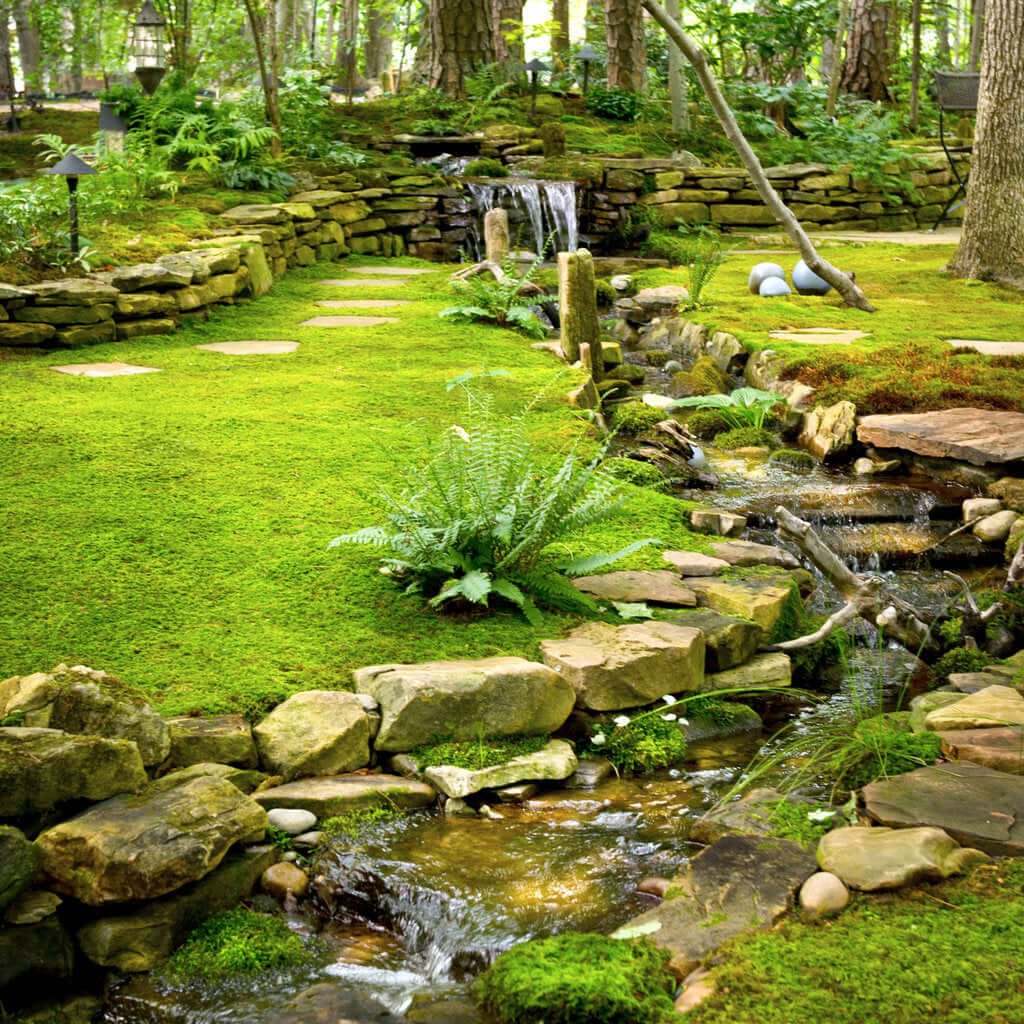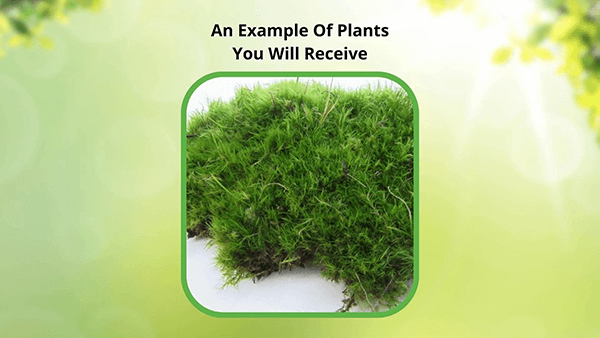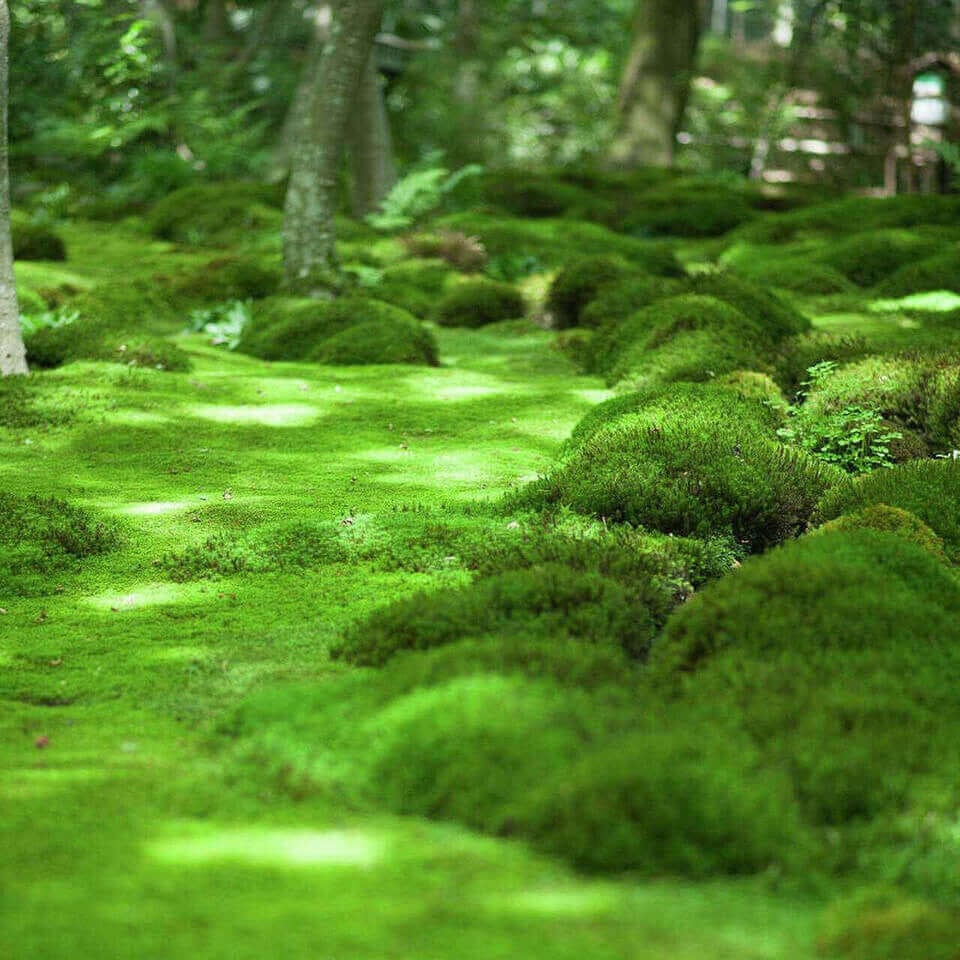



Sheet Moss
This plant ships:
NowWe sell bare root plants - click here to see what you'll receive
Sheet Moss - Hypnum curvifolium
Sheet Moss is a lush, low-growing species that forms a dense carpet of soft, emerald-green foliage. It is often used in terrariums, floral arrangements, and as a ground cover in shaded areas. It is one of the most favored types for lawns. It’s so named because it creates a ‘sheet’ over a garden or forest floor.
Beyond this dense carpets luxurious and welcoming appearance and vibe, it also serves as the protecting home for various microfauna, including frogs, spiders, and insects. Many small ecosystems revolve around the layers of it on the forest floor, and gardeners seeking to add more biodiversity to their gardens should consider adding it to the ground of their gardens.
Where Does Sheet Moss Grow
Officially known as Hypnum curvifolium, it is a wide-ranging plant in every continent except Antarctica. It’s primarily found in temperature regions and adapts well to moist areas. You’ll commonly see it underneath logs or rocks, around tree trunks, or near natural water sources. You’ll usually find it around clay pots, stones, or artificial ponds in gardens.
Sheet Moss Is Like A Thick Carpet
It is most notable for its soft fronds forming a thick green carpet over a forest floor. The individual leaves are tiny and overlap, which helps create the plant’s soft and lavish texture and appearance. Laying down over it will be akin to laying down over nature’s version of a mattress. While the leaves are usually bright green, they will also develop a slight but noticeable yellow tint when moisture levels deplete or are under prolonged exposure to sunlight.
Why is Sheet Moss A Good Choice For Gardeners
Gardeners like it because it is adaptable. It can easily retain moisture to help hydrate the soil underneath and prevent erosion. People often add it to gardens and terrariums to help create an equally lush and inviting, suitable atmosphere. It also requires deficient maintenance and minimal pruning and watering. For this reason, many gardeners who want to make a green covering over the ground will turn to it over grass. It’s a suitable choice for experienced gardeners and those new to the hobby.
Grass is the traditional go-to for groundcover, but one should keep Sheet Moss in mind. Like this type, certain varieties form a lush carpet of green over the surface it inhabits. But much like any other plant, the reasons to grow this type of ground cover go far beyond what it offers aesthetically. Here's how this plant can benefit and enhance your landscape with ease.
Are you looking for ground cover that grows better in your region and offers benefits for the surrounding environment? If so, this plant is an excellent choice. While it doesn't have a root system, it's still a fantastic plant that can defend against soil erosion and serve to control the flow of water better, leading to less flooding if you live in an area that experiences a lot of rain or a few unpredictable showers here and there during the winter and spring seasons.
This plant loves moisture, so it's often recommended for regions where grass can't easily thrive. However, you can go beyond that and grow plants that love moisture on top of this plant as it retains moisture that your other plants will rely on to grow strong. You can even add it to potted plants for this purpose and to improve the aesthetics of items like bonsai trees.
As we just touched upon, it loves moisture, but that doesn't mean it can't withstand conditions that might threaten the lives of other varieties. This variety is more complex, making it easier to keep alive once you spread it across your landscape. If you're looking for ground cover that enhances your space and will hold up over time, this is the one to choose.
Can you use it outside
It can be placed outdoors. It is typically utilized in gardens or yards as a type of ground cover. It requires part or full shade and thus may prove very beneficial when incorporated in outdoor environments to enhance the green look. Besides, it provides better retention of moisture in the soil as well as controlling weeds.
How long does it take for it to grow
The rate of growth is not very fast; it may take weeks or even months before it finds the needed anchor age to grow well fully. Growth can, therefore, be enhanced by factors such as moisture, light, and temperature.
Does it need soil
It can grow on the ground, but it does not have to do that in order to produce new growth. It can develop either in rocky cliffs, trunks of trees, or on concrete walls, though there must be a constant supply of moisture and space for effective growth.
Does it need sunlight
It requires partial shade to full shade, that is, from low light to moderate light. It can be dried up by direct sunlight, so it should be kept in shaded or semi-shaded regions. For indoor growth, this plant only requires indirect light for its complete growth and development.
What is the best condition for it to grow
It grows well where there is relatively high humidity and constant availability of moisture in the air and the location is either low light or shaded. It prefers an acidic substrate and warm temperatures, which is why it thrives in damp, shady gardens.
| Planting zone | [4, 5, 6, 7, 8, 9] |
|---|---|
| Height At Maturity | Under 6 Inches |






Sheet Moss
This plant ships:
Now| Planting zone | [4, 5, 6, 7, 8, 9] |
|---|---|
| Height At Maturity | Under 6 Inches |

